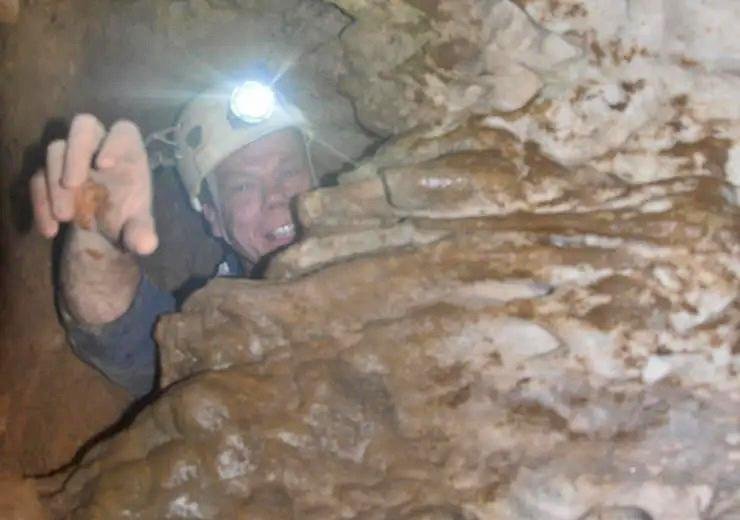An international team of researchers at the University of Central Lancashire (UCLan) uncovered 11,000-year-old human bones in Cumbria, England’s Heaning Wood Bone cave. The find is the earliest human remains ever discovered in northern Britain.

Heaning Wood Bone Cave is a limestone formation with a vertical shaft that has evolved into a complex karstic fissure system. E.G. Holland excavated the cave for the first time in 1958, yielding the skeletal remains of three adults and a juvenile dated to the Early Bronze Age.
Lead archaeologist Prof. Martin Stables has been excavating it since the summer of 2016. He believes the cave was inhabited during the early Mesolithic period (Middle Stone Age), when modern humans were the only hominid species roaming the British Isles.
The UCLan team was able to identify eight individuals buried in the cave, seven of which have been dated by researchers from the University of Nevada and Pennsylvania State University using radiocarbon dating.

Despite the fragmentary condition of the human remains, the accompanying objects indicate that these were all deliberate burials
According to a Cumbria Crack article, Stables has uncovered “animal bone, stone tools, prehistoric pottery, and beads made from perforated periwinkle shells” during his work.
Dr Rick Peterson of UCLan and PhD student Keziah Warburton examined the human bones and prehistoric artifacts discovered in the cave.
“This is a fantastic discovery! We’ve been delighted to confirm Martin’s unbelievable find dates back around 11,000-year-ago and gives us clear evidence of Mesolithic burials in the north. This is particularly exciting as these are some of the earliest dates for human activity in Britain after the end of the last Ice Age,” Dr Peterson said.

The results suggest that the cave was used for burials three period in the prehistoric past: around 4,000 years ago in the Early Bronze Age, around 5,500 years ago in the Early Neolithic, and around 11,000 years ago in the very early Mesolithic period.
The remains of a man discovered in a Cumbrian cave date back 11,000 years, making him Britain’s oldest northerner.
The man was buried at Heaning Wood Bone Cave shortly after Britain thawed after the last Ice Age.

It’s believed he was buried with jewellery. Prof. Stables found a periwinkle shell bead in the cave that has been dated to the same period, suggesting it could have belonged to the man.
According to the university, no images of the remains can be released due to ‘ethical reasons,’ but a research paper on the results will be published.


































Have you done any articles regarding Bourne Hill – Thornton Cleveleys, Lancashire :